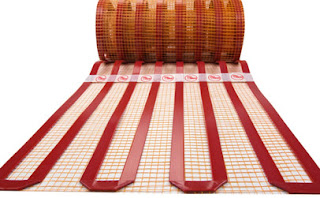Whenever Heat Is Required – Heated Floors All Across The Houses & Zones
Infloor Heating mostly uses radiant heat, which is the more comfortable type of heating since it evenly distributes heat throughout the space. Radiators, on the other hand, use convection and transfer power, warming the air above and surrounding the radiator to a far higher temperature, forcing the excess heat to flow.
As a result, the ground is the coolest part of the
room, while the warm air is concentrated at the ceiling level.
This problem is solved by installing infloor heating, which eliminates cold
spots and distributes heat evenly wherever it is required. A traditional
radiator can reach temperatures of up to 75°C, whereas indoor heating maintains
a much cooler and safer ground temperature of 25-27°C.
Important system elements
Warm water at quite a lower temperature is distributed
through a network of pipes underneath the floor surface to provide central
heating. Smarter thermostats analyze and adjust heat to create a constant
temperature all across the house or individual zones.
Whatever heat source, especially traditional boilers
with renewable ground/air constant heat pumps, could be employed.
 |
| Heated Floors |
Thermostats are devices that
regulate temperature (heating controls)
Multiple room thermostats determine when heating is
necessary and also the ideal temperature within every room. Whenever heat is
required, our digital thermostat and smart heated floors controllers send a signal to the cabling center.
Control panel and manifold
for underfloor heating
Warm water is piped from the heating element to the
control pack, where it is mixed to a temperature of around 50°C.



Comments
Post a Comment